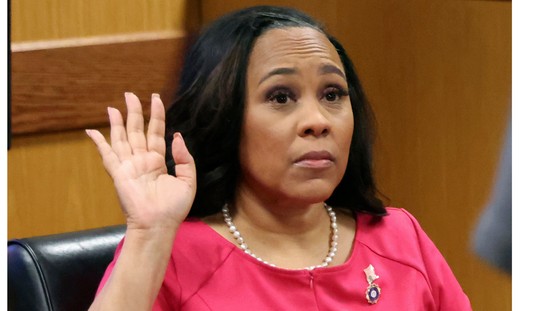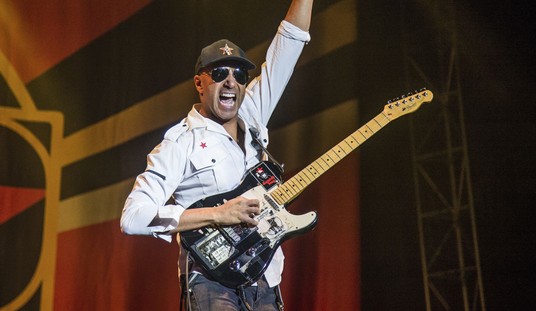Want to get together with a few friends? No problem, the CDC said last night, as long as everyone observes proper pandemic hygiene and minds their other contacts for risk of exposure. Anything more than that should probably be postponed, the CDC recommended, putting an upper limit of 50 people at a time for gatherings anywhere. That calls into question when restaurants and bars might see a light at the end of the COVID-19 tunnel, and whether sports leagues might have a longer hiatus than they first thought:
The Centers for Disease Control and Prevention on Sunday night recommended canceling or postponing events with 50 or more attendees for the next eight weeks, signaling a more aggressive federal position on the steps people should take to contain the COVID-19 pandemic.
The agency said gatherings that should be postponed include weddings, festivals, parades, concerts, sporting events and other types of meetups organized by groups or individuals.
The recommendation comes after the governors of Ohio and Illinois closed bars and restaurants in their states, and ahead of the Senate’s scheduled return on Monday afternoon.
Restaurants can still operate on a take-out basis with that limitation, assuming that they strictly police their staff. Starbucks, for instance, has decided to suspend all in-store accommodations, meaning any lattés will be to go for the next two weeks:
Starbucks Corp has moved to a “to go” model in all its company-owned stores in the United States and Canada for at least two weeks to facilitate social distancing among customers amid the spread of coronavirus, the coffee chain said on Sunday.
As part of the move, Starbucks said it would also stop using seating both at its cafe and patio areas and temporarily close stores in communities with high numbers of coronavirus cases as well as malls and university campuses.
“The situation with COVID-19 is extremely dynamic and we will continue to review the facts and science and make the proactive decisions necessary,” said Rossann Williams, president of U.S. company-operated and Canada businesses.
The CDC’s fifty-person limit and its eight-week time frame has serious implications for the entertainment industry as well. Sports leagues will have to figure out whether to honor that recommendation at all, and if so whether by suspending ticket sales or play altogether:
The already-delayed professional sports seasons in North America could be on hiatus for significantly longer than first planned after federal officials said Sunday that they recommend all in-person events involving 50 people or more be called off for the next eight weeks.
That’s twice as long as the 30-day shutdowns that the NBA, NHL and Major League Soccer decided to put into place last week in response to the global coronavirus pandemic that has already made a deep impact on the U.S. financial markets and has been blamed for at least 64 deaths in this country.
Major League Baseball also was going with what essentially was a 30-day shutdown after canceling the rest of spring training and pushing back the start of regular season play for two weeks. Opening Day was to have been March 26.
But new recommendations from the Centers for Disease Control and Prevention on Sunday night seem to suggest that sports in this country could for all intents and purposes be gone until May, if not later.
The CDC recommendation would make it almost impossible to even play the games without fans. Most leagues have rosters that combine for more than fifty people on the field, not to mention the support personnel for medical, training, coaching, and so on. Perhaps basketball games might slide in under the limit, but that would be it — and how long can they sustain interest in empty arenas? On the other hand, if testing ramps up and players get cleared of COVID-19 infection, the basketball leagues could clean up in the absence of all other sports on television. With their smaller rosters, they’d have the best chance of fielding “clean” squads and staff.
What about schools? Only the most quaint little brick schoolhouses have less than fifty people in them. Most school districts are shutting down for the next couple of weeks anyway, but this warning from the CDC should make it universal. Here in Minnesota, the state yesterday ordered all schools shut down until March 27, a reversal from two days earlier when Gov. Tim Walz had hoped to keep the schools open. Even before the CDC’s recommendation, state officials anticipated several weeks of “distance learning”:
Minnesota schools will close for at least eight days starting Wednesday under a new order from DFL Gov. Tim Walz, marking a dramatic shift in the state’s approach to combating the spread of the novel coronavirus.
Under the order issued Sunday, teachers and school administrators across the state must continue to meet and implement plans to teach students from afar in the event schools must be closed past March 27. It also keeps elementary schools open to provide child care for health-care providers and emergency medical personnel who are directly responding to cases of COVID-19, the illness caused by the virus.
“We cannot wait until the pandemic is in our schools to figure things out,” Walz said, announcing the closure alongside Mary Cathryn Ricker, the state’s education commissioner.
It’s an unprecedented move that will affect nearly 900,000 students in public and charter schools across the state, and it comes after a weekend when the number of known COVID-19 cases spiked to 35 in Minnesota, three of those caused by person-to-person contact.
The state’s schools had scheduled planning sessions for today and tomorrow, meaning that students are effectively out of school immediately. If they aren’t back in school until May, that will seriously impact parents’ ability to work outside the home. It will create its own social distancing, certainly an impact that will cheer health-care planners but not those who are hoping to avoid sharp economic damage.
Unfortunately, it just can’t be helped. Even at fifty, the CDC’s recommendation seems a bit … generous. How many of us would feel comfortable surrounded by 49 other people in a room at this moment in time?
Addendum: For Catholics, most US dioceses have issued dispensations from Mass during the outbreak but have churches still holding them. The bishops in Albany, New York and Lexington, Kentucky have decided to cancel them until further notice:
+@BpStowe cancels all public masses until further notice in Lexington, KY pic.twitter.com/jJ3Ffhw63L
— Christopher White (@cwwhite212) March 16, 2020
I’d guess we’ll see more of this after the CDC’s announcement.








Join the conversation as a VIP Member